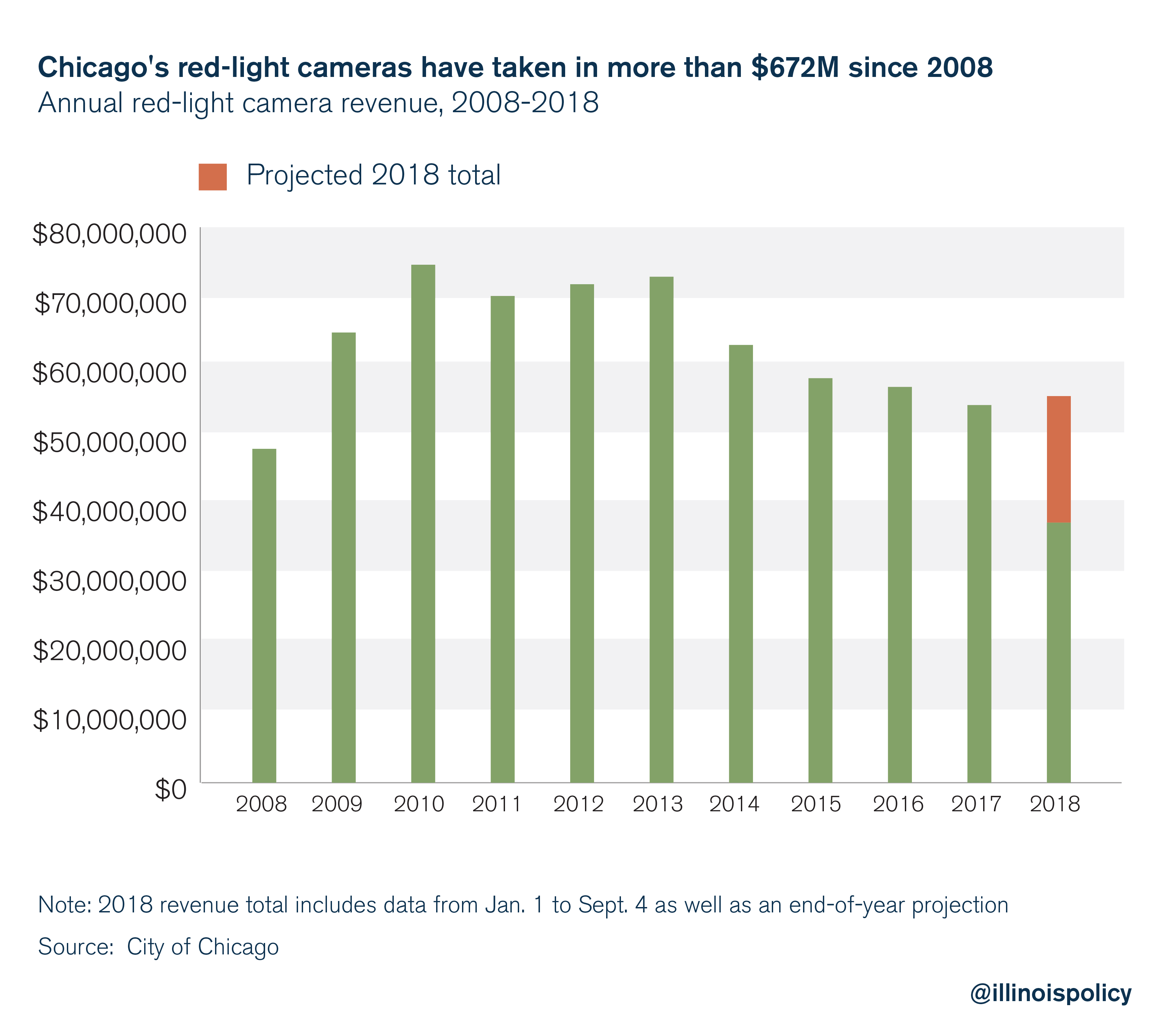Chicago red-light cameras capture more than $670M over last decade
While annual revenues have fallen amid camera removals and other changes, Chicago continues to cash in on red-light cameras.
Chicago’s red-light camera program banked over $54.4 million in revenue in 2017 alone. And from January 2008 to September 2018, revenues totaled $672.4 million, according to records obtained through a Freedom of Information Act request.

The program’s 2018 revenues reached $37.5 million, as of Sept. 4, and are projected to total $55.4 million by the end of the year if ticketing remains consistent.
The steady decline in revenue in recent years follows the removal of at least 84 cameras, in addition to other changes to the program. As of February 2018, Chicago was operating 300 red-light cameras, a decline from its 2013 peak of 384 cameras.
Another cause of this revenue decline is a recent extension to the cameras’ “grace period,” or the fraction of a second in which a driver may pass through a red light without penalty. In March 2017, the city extended the grace period of the devices to 0.3 seconds from 0.1 seconds. A city-commissioned study predicted the move would cost the city $17 million in forgone revenue.
That study also recommended Chicago continue its red-light camera program, citing public safety benefits. But another study released that year by Case Western Reserve University found that red-light cameras do not increase traffic safety. Those findings reflect that of an earlier Chicago Tribune study, which reported in 2014 that “red-light cameras fail to deliver the dramatic safety benefits long claimed by City Hall.” The Tribune study also found that while side-impact, or “T-bone,” collisions decreased, rear-end crashes actually increased after the installation of red-light cameras.
In September 2017, the Tribune reported that the Illinois Department of Transportation, or IDOT, often ignores its own policies when approving red-light camera permits. IDOT, which is responsible for approving red-light cameras installed on state roads, sets an accident threshold to determine the necessity of red-light cameras. However, more than half of the intersections for which IDOT approved permits were already rated among the state’s safest in IDOT’s own studies, the Tribune found.
Moreover, Chicago’s red-light camera program has faced significant legal challenges, only adding to its cost to taxpayers. In 2017, Chicago settled for nearly $40 million after a class-action lawsuit alleged the program violated motorists’ due process rights. A more recent class-action lawsuit alleges that the program fails to satisfy a number of state law requirements, rendering the program “unconstitutional.”
Chicago and other Illinois municipalities should discontinue their red-light camera programs, which serve as revenue sources for local governments without providing public safety benefits.
If you would like to take action, you can use this tool to find out if there’s a red-light camera program in your community, and contact your mayor to voice your support for a ban on red-light cameras.
Sign the petition
Ban red light cameras
Sign the petition to ban red-light cameras in Illinois.
Learn More >